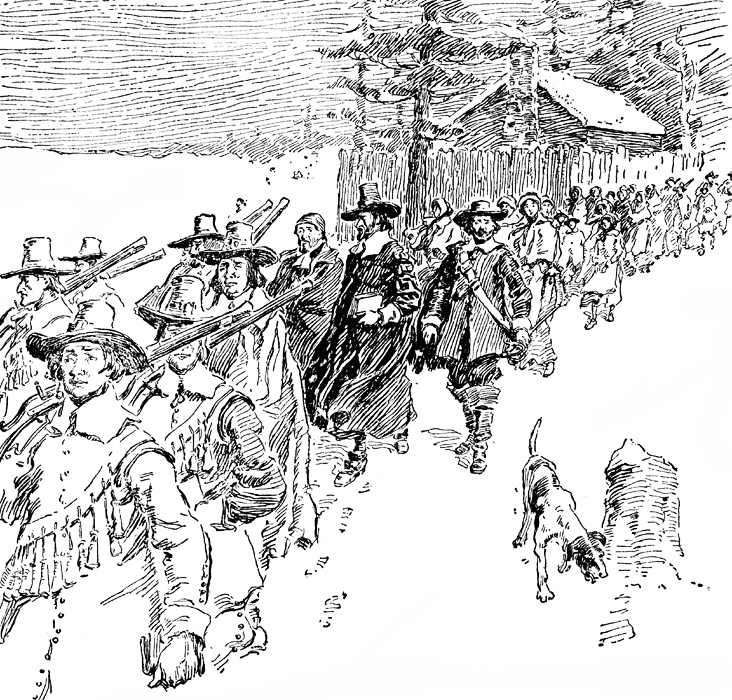

The community had only partially completed a wooden palisade to defend their community when the attack came and many of the 1000 people inside the walls were women, children and elderly. Though the Narragansetts led by Chief Canonchet had remained neutral, New England’s paranoia fears that they would join Metacomet, compelled Winslow to launch a pre-emptive strike.

In the winter of 1675, New England Governor Josiah Winslow and Mohegan Chief Uncas led 1150 militia and warriors to attack the main Narragansett community in present day South Kingstown, Rhode Island. By 1676, the English were able to convince the Mohegan nation to join their side, as well as forging an alliance with the Mohawks. Rangers launched amphibious raids into the Wabanaki nations’ territories and devastated Metacomet’s followers. These new type of soldiers, called Rangers, would rely on guerrilla tactics instead of massed volleys of gunfire. Church also enlisted the help of Pequot warriors to train his men to fight as the First Nations did. With no regular troops to guard against attack, English American settlers like Benjamin Church took up arms to defend themselves. Supported by French colonial officials and Acadian settlers, Wabanaki warriors raided English communities along the frontier. By strengthening older economic, military and kinship ties between them, the nations created the Wabanaki Confederacy. Though the Narragansetts, led by Canonchet, tried to stay neutral in the growing conflict, the New Englanders were convinced they would join with the Chief they called King Philip and attacked them.Īs chaos unfolded to their south, the Mi’kmaq, Maliseet, Abenaki, Penobscot and Passamaquoddy saw an opportunity to stop the creeping English expansion into present day Maine. These deaths provoked a war with a coalition of nations, led by the Wampanoag chief Metacomet. The tensions between the settlers and the Wampanoag exploded into war in 1675, when the English arrested and hung three Wampanoag men over the alleged murder of an Indigenous Christian convert. To their north, the Abenaki, Mi’kmaq, Passamaquoddy, Penobscot and Maliseet aligned themselves with the Acadians French settlers in Atlantic Canada. To their east and south, the Wampanoag, Nipmuc and Narragansett struggled to keep the peace with the foreign settlers, while still preventing the wholesale annexation their homelands.

In the 1670s, the growing population, size and power of the English colonies in present day New York and New England posed a growing threat to the First Nations who lived around them.


 0 kommentar(er)
0 kommentar(er)
